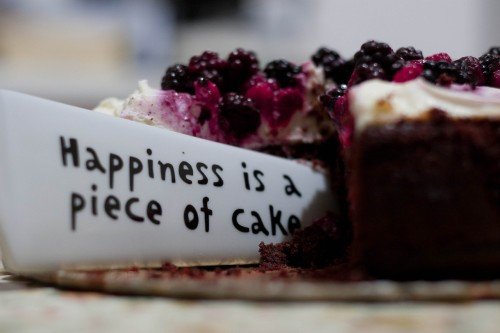
Making cakes can be a fun and rewarding experience, whether you're an experienced baker or just starting out. But to make a cake, you'll need the right tools and ingredients. In this blog post, we'll take a detailed look at the items you need to buy to make cakes.
First, let's start with the essential ingredients.
-
Flour Flour is the main ingredient in most cake recipes. It provides the structure and texture of the cake. You can use all-purpose flour for most cake recipes, but some recipes may call for cake flour or self-raising flour.
-
Sugar Sugar adds sweetness to the cake and helps to give it a golden brown color when baked. Granulated sugar is the most common type of sugar used in cake recipes, but you can also use brown sugar, caster sugar, or powdered sugar depending on the recipe.
-
Eggs Eggs add moisture, richness, and structure to the cake. Most cake recipes call for large eggs, but you can also use medium or extra-large eggs depending on the recipe.
-
Butter or Margarine Butter or margarine adds richness and flavor to the cake. You can use unsalted or salted butter depending on your preference. If you're using margarine, make sure it's a baking margarine and not a spreadable one.
-
Baking Powder and Baking Soda Baking powder and baking soda are leavening agents that help the cake to rise. Baking powder is used in recipes that contain acidic ingredients like buttermilk or yogurt, while baking soda is used in recipes that contain acidic ingredients like lemon juice or vinegar.
-
Milk Milk adds moisture and richness to the cake. You can use whole milk, skimmed milk, or plant-based milk like almond milk or soy milk depending on your preference.
-
Flavorings and Extracts Flavorings and extracts like vanilla extract, almond extract, and lemon zest add flavor to the cake. You can use one or more of these depending on the recipe.
Now that we've covered the essential ingredients, let's move on to the tools and equipment you need to make cakes.
-
Mixing Bowls You'll need mixing bowls to mix the ingredients together. It's best to use glass or stainless steel mixing bowls as plastic ones can absorb odors and flavors.
-
Measuring Cups and Spoons Accurately measuring ingredients is essential for baking. You'll need measuring cups and spoons to measure ingredients like flour, sugar, and milk.
-
Electric Mixer An electric mixer makes mixing the ingredients easier and faster. You can use a stand mixer or a hand mixer depending on your preference.
-
Rubber Spatula A rubber spatula is essential for scraping down the sides of the mixing bowl and ensuring that all the ingredients are well mixed.
-
Cake Pans You'll need cake pans to bake the cake in. You can use round, square, or rectangular pans depending on the recipe.
-
Parchment Paper Parchment paper is used to line the cake pans to prevent the cake from sticking to the pan.
-
Cooling Rack A cooling rack is used to cool the cake after it's been baked. It allows air to circulate around the cake, preventing it from becoming soggy.
-
Icing Spatula An icing spatula is used to spread the frosting or icing on the cake. You can use a straight or angled spatula depending on your preference.
-
Pastry Bags and Tips Pastry bags and tips are used to decorate the cake with frosting or icing. You can use different types of tips to create different designs.
Pastry bags and tips are an essential tool for any cake decorator. They allow you to create beautiful and intricate designs with frosting or icing on your cakes, cupcakes, and other baked goods. In this blog post, we'll take a closer look at pastry bags and tips, how to use them, and the different types available.
Pastry Bags A pastry bag is a cone-shaped bag made of plastic or nylon that's used to hold frosting or icing. It has a small opening at the tip where the frosting or icing can be squeezed out. There are two types of pastry bags: disposable and reusable.
Disposable pastry bags are made of lightweight plastic and can be used once and thrown away. They come in different sizes and are convenient to use as you don't have to clean them after use.
Reusable pastry bags are made of nylon or silicone and can be washed and used multiple times. They come in different sizes and are more environmentally friendly than disposable bags.
Tips Pastry tips are small metal nozzles that are attached to the opening of the pastry bag. They come in different shapes and sizes and are used to create different designs with frosting or icing.
Here are some of the most common types of tips and their uses:
-
Round Tip A round tip is the most basic and versatile tip. It's used to create lines, dots, and borders on cakes and cupcakes.
-
Star Tip A star tip has a pointed end with a star-shaped opening. It's used to create rosettes, swirls, and shells on cakes and cupcakes.
-
Petal Tip A petal tip has a curved shape and is used to create flower petals, leaves, and ruffles on cakes and cupcakes.
-
Leaf Tip A leaf tip has a pointed end with a V-shaped opening. It's used to create leaves and stems on flowers, as well as other decorative elements.
Using Pastry Bags and Tips To use a pastry bag and tip, follow these steps:
-
Fit the tip into the opening of the pastry bag. Push it in firmly so that it's secure.
-
Spoon the frosting or icing into the pastry bag. Don't overfill the bag as it can become difficult to handle.
-
Twist the top of the bag to close it and push the frosting or icing down towards the tip.
-
Hold the bag firmly and apply pressure to squeeze out the frosting or icing. Use your other hand to guide the tip and create the desired design.
-
To change the tip, simply unscrew it from the pastry bag and replace it with a different one.
Tips for Using Pastry Bags and Tips Here are some tips to help you get the most out of your pastry bags and tips:
-
Practice makes perfect. Don't expect to create perfect designs the first time you use a pastry bag and tip. It takes practice and patience to master the technique.
-
Use the right consistency of frosting or icing. If the frosting or icing is too thick, it will be difficult to squeeze out of the pastry bag. If it's too thin, it will be runny and won't hold its shape.
-
Clean the tips and pastry bags thoroughly after use. Rinse them with warm water and soap and let them air dry.
-
Use different colors of frosting or icing to create a more colorful and visually appealing design.
Conclusion Pastry bags and tips are an essential tool for any cake decorator. They allow you to create beautiful and intricate designs with frosting or icing on your cakes, cupcakes, and other baked goods. By using different types of tips, you can create a variety of designs and add a personal touch to your baked creations.








